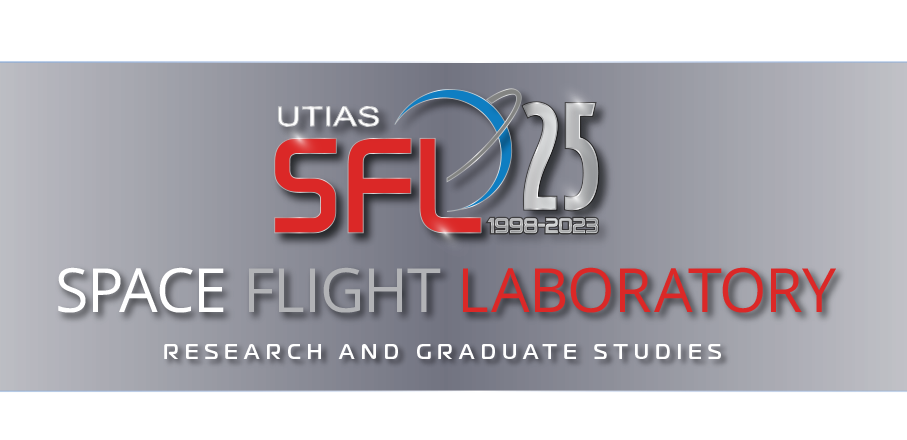
About Us
The Space Flight Laboratory (SFL) was established in 1998 at the University of Toronto Institute for Aerospace Studies (UTIAS). Over the past 25 years, SFL has researched and developed novel technologies for small spacecraft, successfully pushing the envelope and changing the world’s perception of what small satellites can do.
As part of its role as a leading space research facility, SFL trains the next generation of aerospace engineers in a graduate program for aerospace engineering studies at the Master and Ph.D. levels. SFL uses a "teaching hospital" model of education where students learn through real-world practice. Students admitted to the program are involved in actual space missions and gain practical, hands-on space systems engineering experience under the tutelage of our expert staff. SFL seeks students with strong backgrounds in Aerospace, Electrical and Computer Engineering, Computer Science (software) and Mechanical Engineering.
SFL offers students the opportunity to join integrated multi-disciplinary teams that design, build, launch and operate satellites in a typical two-year cycle, about the time it takes to complete a Master’s degree. While at SFL, students are apprentices and work side by side with engineering professionals in small teams to define and realize space missions. Students are exposed to the complete spacecraft development cycle, from mission conception to launch and on-orbit operations. No other program offers the depth and breadth of this demanding real-world experience.
Microspace breakthroughs
Driven by the goal of enabling smaller satellites to cost-effectively perform the same applications as larger, more traditional satellites, SFL has developed missions for Earth observation, communications, surveillance and monitoring, technology demonstrations, and planetary science. In bringing these missions to fruition, SFL has achieved microspace breakthroughs in advanced attitude control, drag sail deorbiting, autonomous formation flight, modular power systems, and developed custom deployables (e.g., antennas, solar panels, shutters, instrument doors) for small spacecraft.
SFL’s significant research into advanced attitude control for highly accurate and stable pointing and low-cost formation flying technology enables data collection with a wide variety of sensors, including video, multispectral, and panchromatic cameras, hyperspectral SWIR spectrometers and many others. SFL has also developed its own modular, scalable power systems to meet varying demands, from a few watts to kilowatts, providing great flexibility for differently sized missions.
SFL develops smaller and less expensive satellites by exploiting the latest advances in miniaturization of electronics, sensors and actuators, which makes space more accessible and affordable to all. By carefully controlling costs and advancing technology through innovation, SFL removes barriers for government, research and commercial entities to provide valuable services worldwide. Students in the SFL graduate studies program learn state-of-the-art approaches and technologies to build modern spacecraft for cost- and schedule-aggressive missions.
Research areas
As part of a tightly integrated design team, students specialize in one of several areas, while actively participating in the design of the complete spacecraft. These areas include but are not limited to:
- On-board computers
- On-board software
- Tracking, telemetry and command (radios, antennas, communications)
- Ground station hardware and software
- Power systems analysis and design
- Thermal analysis and design
- Structural analysis and design
- Attitude control system analysis, simulation and design
- Propulsion
- Payloads (instruments for science and technology demonstration)
- Systems engineering (mission analysis, requirements, design trades, budgeting)
Talented students may also get to work on multiple subsystems during a given satellite project or on multiple satellites. This intense two-year program opens many doors for graduates, leading to rewarding research/academic careers or exciting jobs in the space industry, possibly at SFL as full-time staff after graduation.




